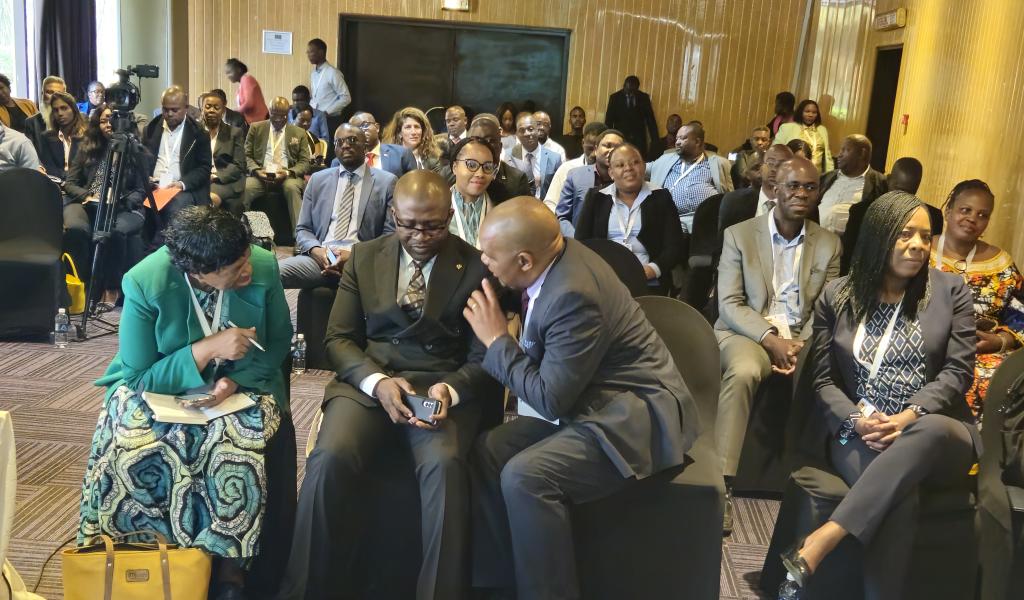News
Private Sector Opportunities in Energy Efficiency (EE)

Innovative EE business models and operational principles are revolutionizing the energy landscape in sub-Saharan Africa and creating opportunities for private-sector companies at the same time.
Among them is the Energy-as-a-Service (EaaS) business model, which aims to alleviate the upfront investment cost barriers hindering end-users from accessing energy-efficient appliances and technologies by shifting the focus from selling hardware to providing ongoing energy services. A prime example is the Energy Service Company (ESCO).
ESCOs provide comprehensive energy solutions to clients, including energy audits, design and implementation of energy-saving measures, financing options, and ongoing maintenance services.
ESCOs often use performance contracting or shared savings agreements to finance projects and share the resulting energy savings with the client. Thus, energy service clients pay a fee without having to deal with technical solutions or upfront investment costs.
ESCOs assume the bulk of the technical, financial, construction, and performance risks associated with EE interventions and provide performance guarantees for entire projects. This enables clients to implement such projects with minimal upfront investment and risk. Business models that ESCOs use include Energy Performance Contracting (EPC), Cooling as a Service (CaaS), Lighting as a Service (LaaS), Equipment Leasing, etc. These models enable clients to transform capital expenses into operational ones.
Energy Performance Contracting
In the EPC business model, ESCOs provide diverse energy services, guarantee energy or cost savings, and facilitate financing. ESCOs are compensated only when they achieve the promised energy or cost savings. Various arrangements such as shared savings, guaranteed savings, or “chauffage” contracts offer flexibility.
Cooling as a Service
This approach has end customers pay ESCOs for cooling services instead of investing in expensive cooling equipment. Clients cover expenses for equipment, installation, maintenance, electricity, and profit margins through periodic payments fixed according to the quantity of cooling service received. Flexible pay-per-service or district cooling approaches allow for optimal cooling infrastructure utilization.
CaaS is exceptionally promising for East and Southern African countries, where lack of access to cooling leads to economic and social losses in agriculture, food value chains, and health services.
Lighting as a Service
Under a LaaS arrangement, clients pay ESCOs for lighting instead of the physical lighting infrastructure. ESCOs guarantee uptime and light levels and take care of recycling and other end-of-life issues. LaaS also addresses the risk of technology becoming obsolete.
Leasing models
The various ESCO models help overcome the substantial upfront costs associated with adopting EE appliances and technologies and allow clients to transform costs from capital expenses to operational expenses, freeing up capital for other crucial investment priorities. The primary way to finance this is through leasing.
Two main leasing models are available. A capital lease is a long-term loan that transfers ownership of the asset, which is recorded on the lessee’s balance sheet along with its associated liability. An operating lease allows the lessee to use the asset without gaining ownership rights or having to record the asset on the company balance sheet. This allows lessees to avoid upfront costs, optimize subsidies and tax deductions, access additional financing with operating leases, and mandate suppliers to provide services.
Not only does leasing enable clients to access technology beyond their financial reach, but it also provides an avenue to distribute innovative energy technology that may face customer scepticism due to being unknown and perceived as risky. In addition, leasing is a means for equipment suppliers to diversify their revenue streams.
Helping ESCOs take off
In addition to high upfront costs, energy service users and ESCOs in EAC and SADC countries face significant barriers including lack of affordable financing, uncertainty in the performance of EELA technology, and limited technical skills for designing and implementing EELA projects. To assist with these challenges, the EELA project launched the EELA Technical Assistance, and Co-financing Facility in 2021.
The facility provides ESCOs with technical assistance and co-financing and helps energy users design appropriate energy efficiency service business models.
In a pilot phase, the EELA Facility provided co-financing and consultative support to six ESCOs implementing EELA projects in EAC and SADC countries.
In Kenya, Icopower has successfully implemented an energy-efficiency project under a Shared Savings Energy Performance Business Model for Athi River Hatchery. The 13-month project insulated the client from all project-related capital and operational expenditures.
In Malawi, Green Impact Technologies (GIT) is implementing a solar streetlighting project for Lilongwe City Council and is also providing 500 smallholder farmers with solar water pumps, while Energy (Pty) Limited is supplying SureChill PAYGo off-grid refrigerators to 400 rural households in Malawi.
In Rwanda, ERE Ltd is implementing energy conservation measures for Kigali’s King Faisal Hospital, while STOP Ltd is implementing a lighting retrofit for Kigali Independent University. Tanzanian ESCO AG Energies is providing the Zanzibari Kwama Pani fishing community with an energy-efficient solar fish drying service.
Scaling up EE in sub-Saharan Africa
The outcome of the pilot phase shows an existing opportunity to scale up EE in sub-Saharan Africa. Market analysis based on electricity consumption and energy intensity indicators finds an addressable market size in the EAC, ECOWAS, and SADC regions. However, financing, capacity, and policy barriers remain. To overcome them, UNIDO proposes to move from the EELA Facility to an Energy Efficiency Financing Program (EEFP) targeting private sector-led EE projects using ESCO financing models in the three regions.
A first program component will provide technical assistance for market development, with outputs including ESCO capacity building, development of an EE project pipeline, communication and awareness on EE projects, financial capacity-building, and advisory support to governments for the development and adoption of policies and regulations conducive to ESCO market growth.
A second component will comprise a Loan-Guarantee Fund to attract private-sector investments to bankable EE projects by offering secured returns on investment with guaranteed payback, thus mitigating the perceived risks associated with financing such projects.